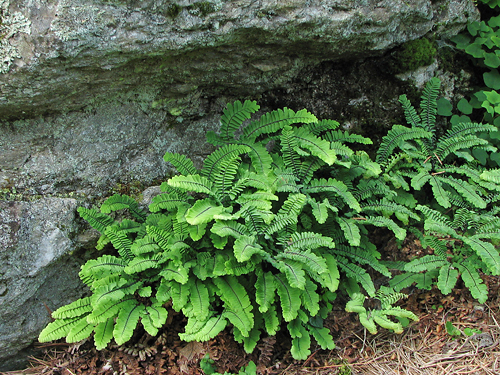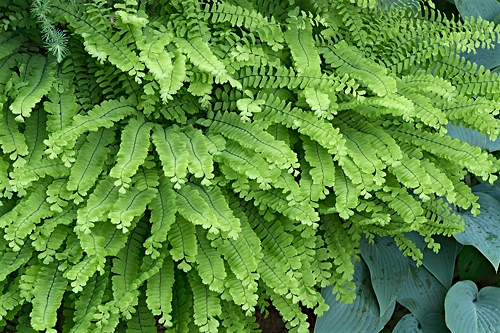

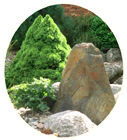
HOSTAS
FERNS
Readers will find in this section ferns from a wide variety of natural habitats; moist rich woodlands, dry sunny ledges, acidic swamps, limestone crevices, serpentine outcrops and other such niches. Most of these ferns we offer for sale, but a few are shown for reference only. All the ferns we sell are propagated here at the nursery from spore or by division, None are wild collected, some are in short supply. A few of these garden-worthy ferns are found nowhere else in the nursery trade.




Cady’s Falls Nursery
Don & Lela Avery
637 Duhamel Rd. Morrisville, Vt. 05661
802-888-5559 [email protected]
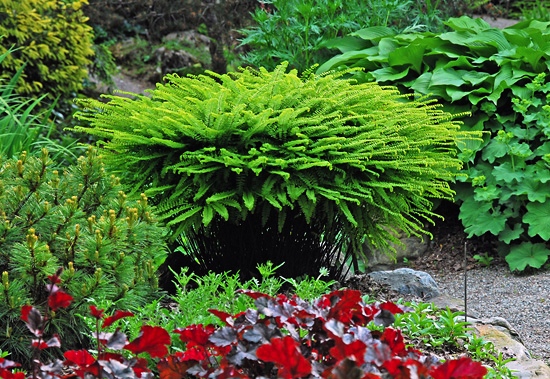
Adiantum ‘Sun Maiden’ unfurling in May
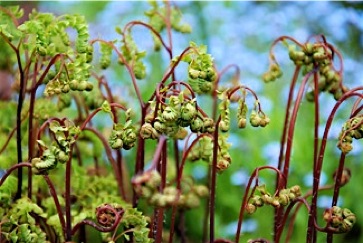
Adiantum ‘Sun Maiden’ in June
Adiantum viridimontanum, in the sunny rock garden
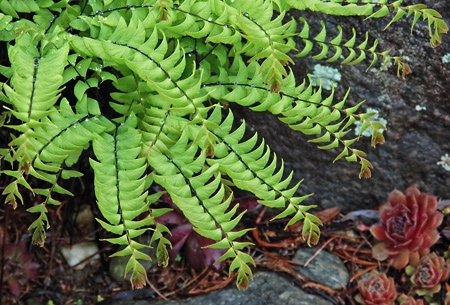
Adiantum viridimontanum in the rock garden, fronds elongating in spring with characteristic triangular pinnules and pink tips.
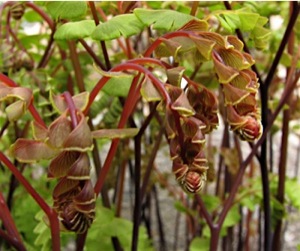
Adiantum pedatum, our native woodlander, volunteering
in the north-facing rock garden (above and below)
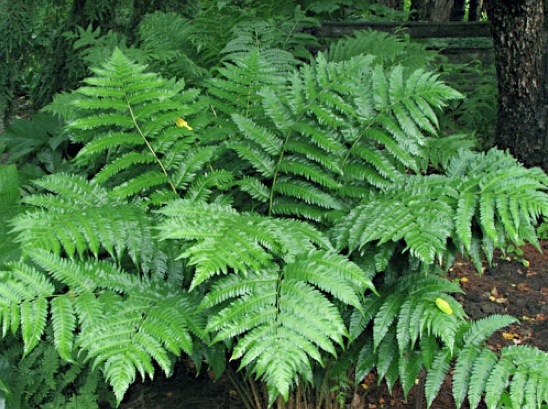
Dryopteris goldiana, our native Goldie’s fern
Adiantum venustum, Himalayan Maidenhair fern, grown from division
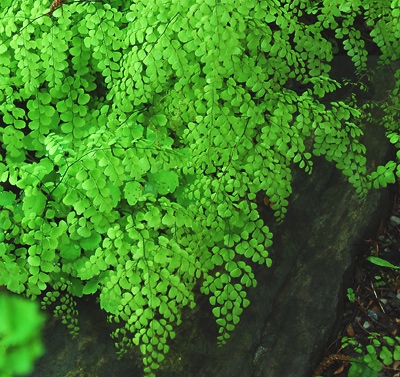
Ferns growing in north-facing tufa rock. Asplenium viride in the center, has been volunteering
wildly on the calcium rich rock. A young Polystichum lonchitus can be see in the upper right.
Dryopteris fragrans, growing very slowly on the tufa
Asplenium scolopendrium: American Hart’s Tongue Fern, showing dark spore
clusters on the reverse side. This rarity has been volunteering obligingly
on the damp tufa.
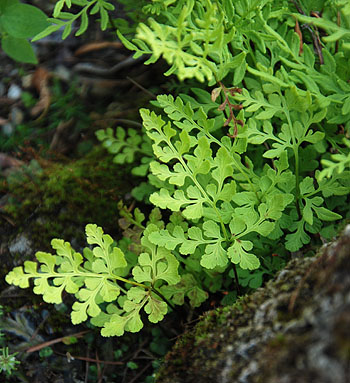
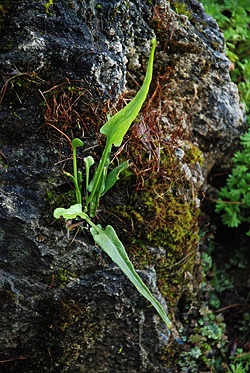
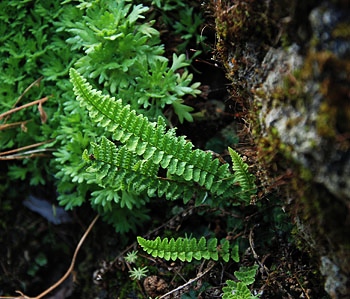
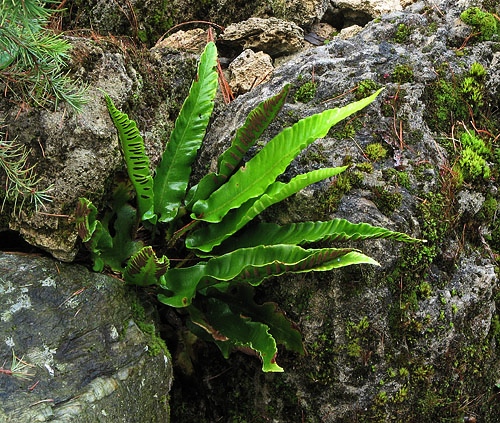
Asplenium rhyzophyllum, the walking fern
travels by rooting at the tips of the fronds.
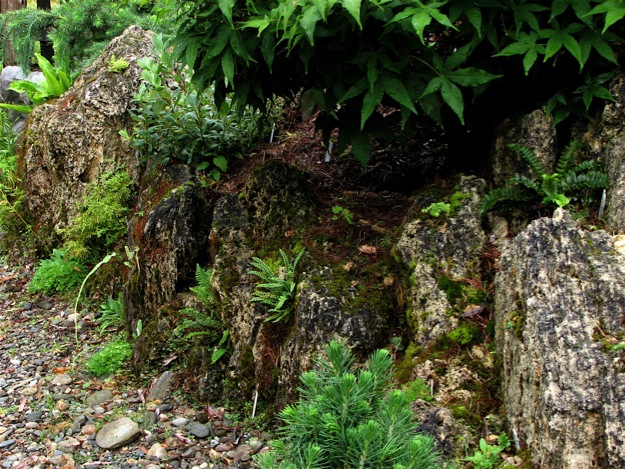
Lime-Loving Ferns in Tufa ROCK
These are a few difficult-to-grow and rarely-propagated ferns which have been thriving in our north-facing tufa wall for several years now. Tufa is a soft rock which is nearly 100% calcium carbonate. Plant roots penetrate into, and absorb nutrients from, the porous stone which, in our garden, is kept moist with drip irrigation laid out in the sand behind the rock face.
An article by Don Avery entitled “Growing Lime-Loving Ferns in Tufa in Vermont” appeared in the spring 2009 edition of the “Hardy Fern Foundation Quarterly.” To see the full text of that article click here.
Ferns of the Forest Floor
Adiantum viridimontanum, in the wild, among serpentine boulders in the old asbestos mine in Eden, Vt
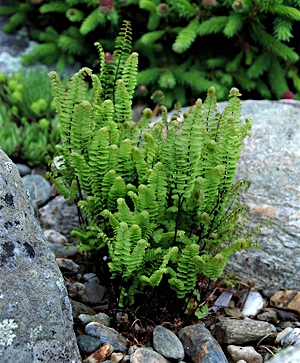
Adiantum aleuticum ‘Serpentine Dwarf’ from Newfoundland and
given to us by Maria Galletti. A rare gem for the sunny, but not too dry,
rock garden. It becomes gangly when grown in the rich shaded sites.
Comes true from spore.
Adiantum viridimontanum, unfurling in May
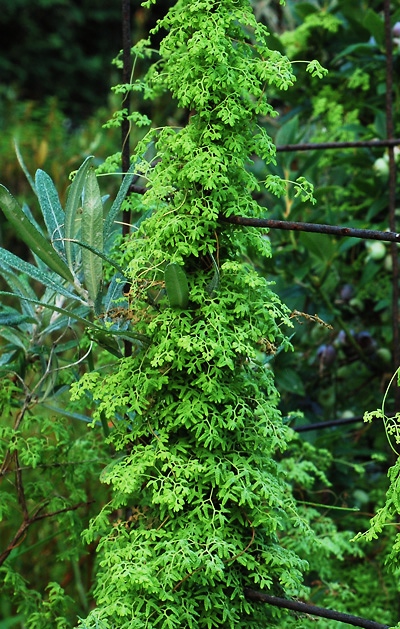
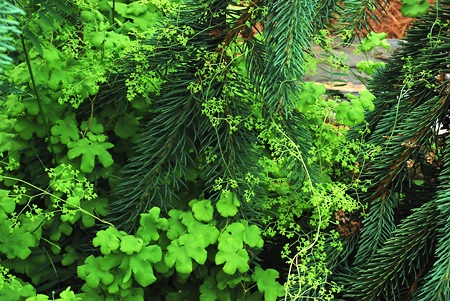
Adiantum ‘Sun Maiden’
Sun Maiden is a sterile hybrid that appeared here spontaneously in the nursery beds, many years ago, in a group of Adiantum aleuticum var. subpumilium. We assume that one of the parents is subpumilium but the other parent is unknown. This robust maidenhair fern makes extremely dense clumps and holds its fronds in the horizontal plane, with the pinnules overlapping and twisted on the stalks. It looks clean all summer in full sun, in rich moist soil. Produces only aborted spores, propagated in limited quantities by division.
Adiantum viridimontanum
Green Mountain Maidenhair Fern
The Green Mountain Maidenhair Fern is a natural hybrid between the eastern and the western maidenhair ferns. This fertile species is found on dry, sunny serpentine outcroppings and in moist serpentine woodlands in Northern Vt, SE Quebec and at two isolated serpentine sites in Maine. It adapts well to common garden soil as long as it has plenty of moisture available. Under heat and water stress conditions, exposed plants often go dormant in summer and then push out a new set of smaller fronds at the onset of cooler weather. Grown from spore.
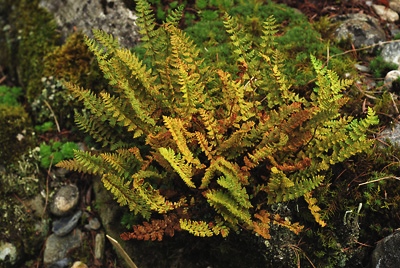
Woodsia ilvensis, the rusty woodsia, growing on a mossy rock,
in full sun. And below, turning rusty in Sept.
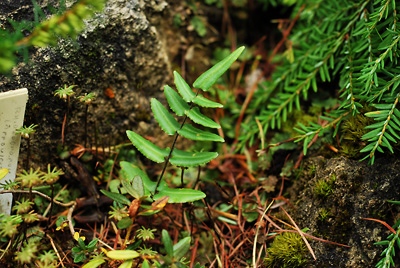
Adiantum aleuticum var. subpumilum, a dwarf maidenhair fern known only from
five remote sites on the Pacific shore of Vancouver Island and one “lost” site
in the Olympic Peninsula, all close enough to the ocean to receive salt spray.
Subpumilum is shown here in a damp, north-facing niche in our rock garden.
This dwarf form comes true from spore.
Pellea atropurpurea, the purple cliff brake, spores around freely
in a sunny rock garden, with limestone mixed into the soil,
or on tufa.
Cryptogramma stellerii, the fragile rock-brake
showing sterile fronds in the foreground and
narrow fertile fronds above
OTHER Rock-Loving Ferns
Adiantum pedatum ‘Billingsae’, with quilted overlapping
pinnules. Discovered in the hills of Woodstock, Vt in 1929
and never found again. It comes true from spore.
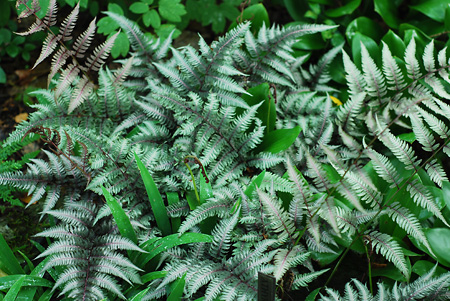
Atherium niponicum var. pictum, Japanese painted fern
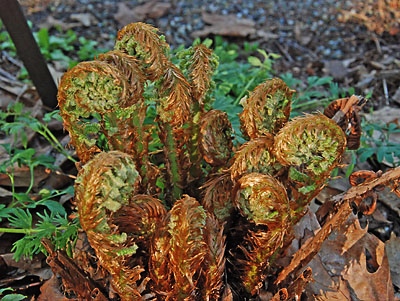
Dryopteris Crassirhizoma emerging in spring
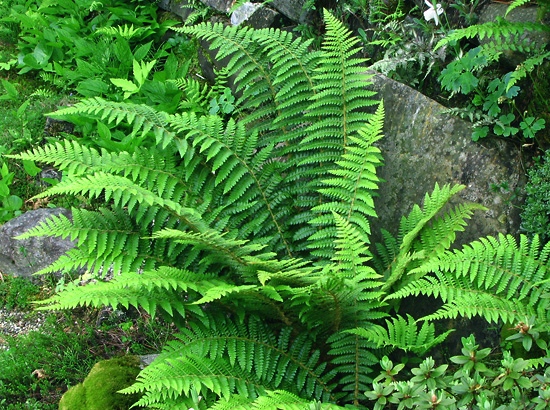
Polystichum braunii, our native Braun’s holly fern
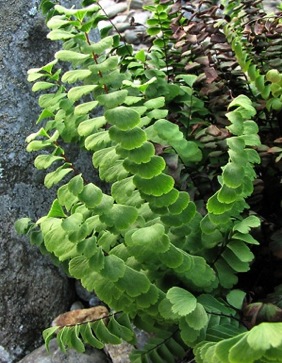
Lygodium Palmatum
The Climbing Fern
The climbing fern is a rare and unusual fern found in wet acidic soils and believed to be recently extirpated in Vermont. Now rare in New England, the center of the population appears to be the Cumberland Plateau in eastern Tennessee. Lacy fronds clamber up on neighboring shrubbery or on wire supports in the garden. The climbing fern can make large, showy colonies but is often difficult to establish. It has done well for us in full sun or bright shade, with lots of course sand and peat moss dug into damp soil. Propagated by division, or occasionally by spore, it is all but unknown in the nursery trade.
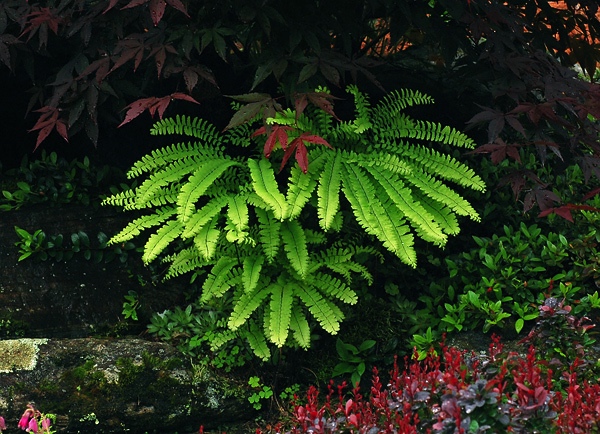
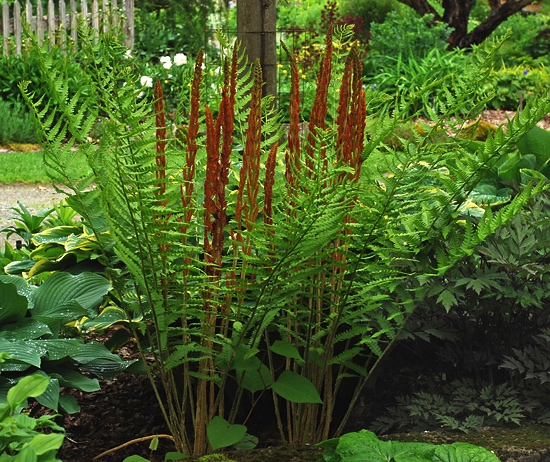
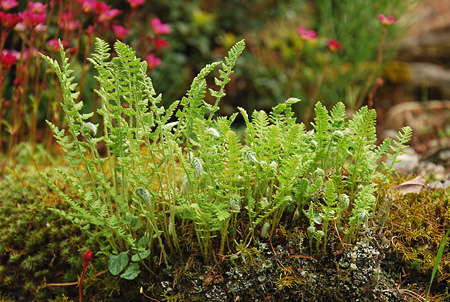
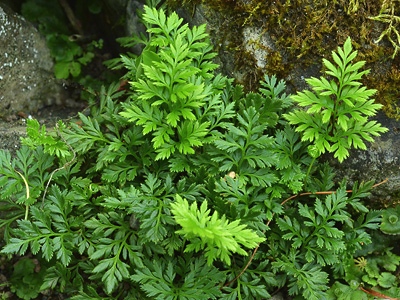
Cryptogramma acrothichoides. We are hoping this
westerner settles into our north-facing rock wall
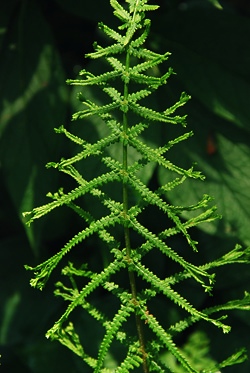
Osmunda cinnamomea, our native cinnamon fern, with fertile fronds in June
Athyrium felix-femina ‘Dre’s Dagger’, a lady fern
with criss-crossed pinnae and crested tips
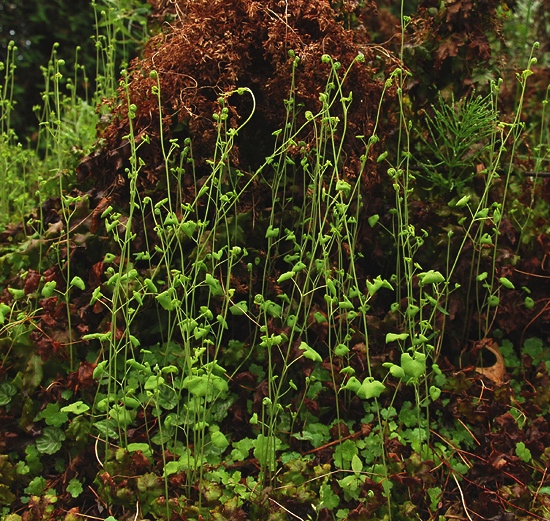
Fertile pinnae increasing rapidly in mid-summer
Lygodium palmatum with both broad sterile pinnae and
dissected fertile pinnae climbing up through a dwarf spruce
New growth unfurling in late May. Last year’s brown leaves
can be seen in the background.
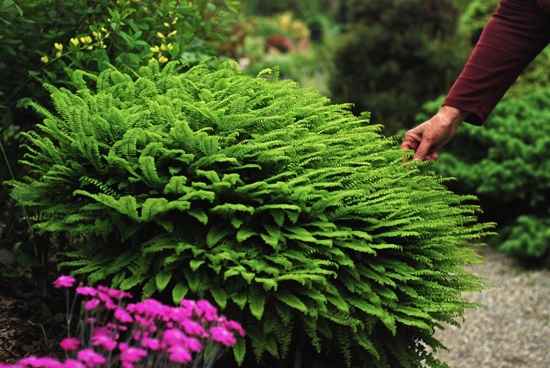
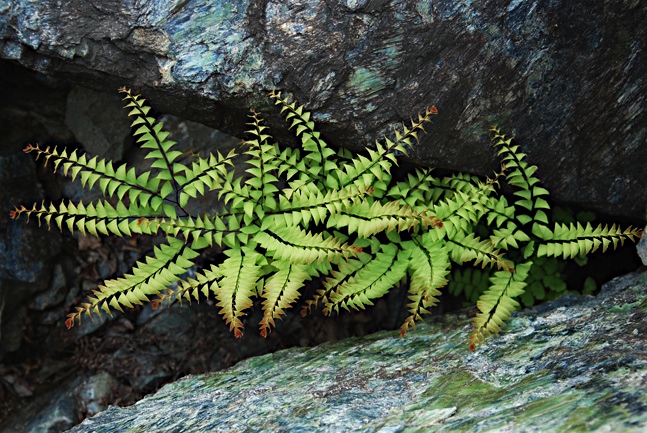




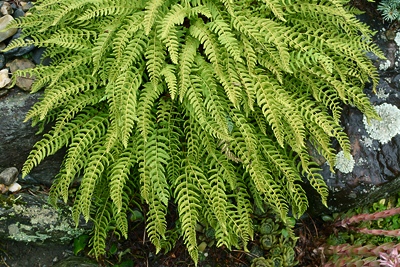
Woodsia polystichoides, at home in the sunny rock garden
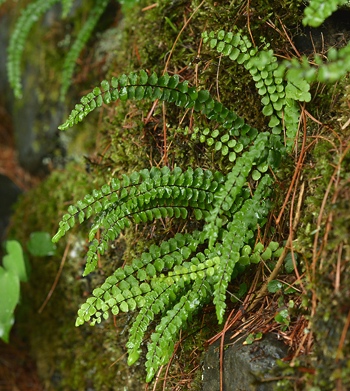
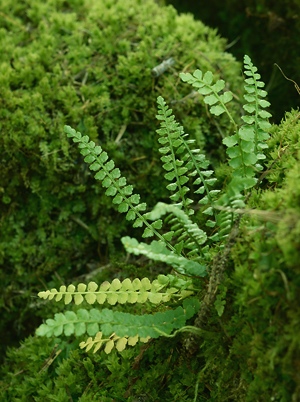
Asplenium viride with characteristic green stems
MAIDENHAIR FERNS
Asplenium tricomanes, volunteering in our north-facing wall
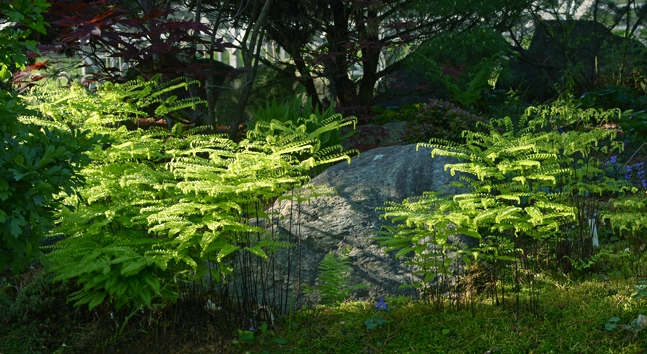
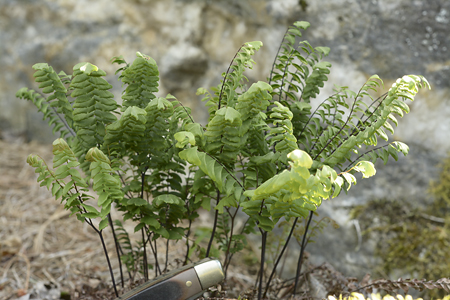
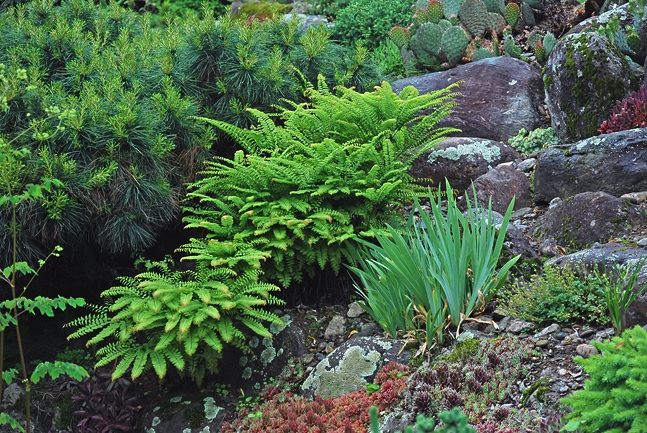
Adiantum Pedatum
Eastern Maidenhair
Our lovely native maidenhair has become a cohesive theme in our gardens, producing sporelings wherever it can find a cool root run. It appears frequently with the self-sown European ginger and the contrast is quite pleasing.
Adiantum Aleuticum
Western Maidenhair Fern
Found in almost all the western states and western Canada on wide range of habitats and soil types, including serpentine. The eastern populations are strictly limited to isolated serpentine sites from Newfoundland to Delaware. Adiantum aleuticum expresses tremendous variability from site to site; sun/shade, dry/moist, serpentine/non-serpentine and adaptability to garden soils is variable. We propagate two garden-worthy forms and are experimenting with others.
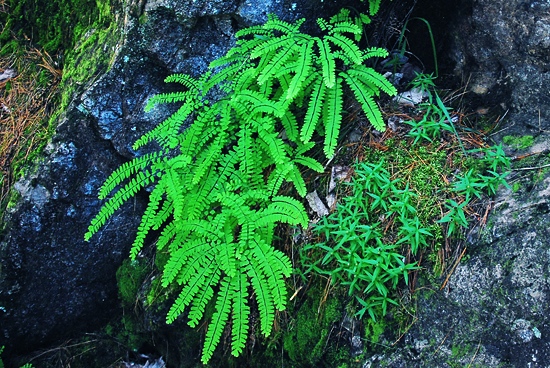
Adiantum aleuticum on a shaded serpentine outcropping
at the headwaters of the Missisquoi River, in Lowell Vt
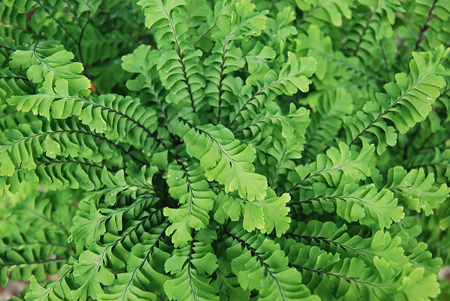
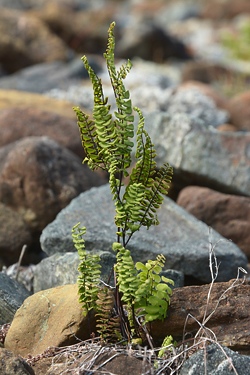
A dwarfed population of Adiantum aleuticum
growing in bright sun on a serpentine, gravel
outwash, Chute du Diable, Mont Albert,
Gaspe Peninsula, Canada 2014.
